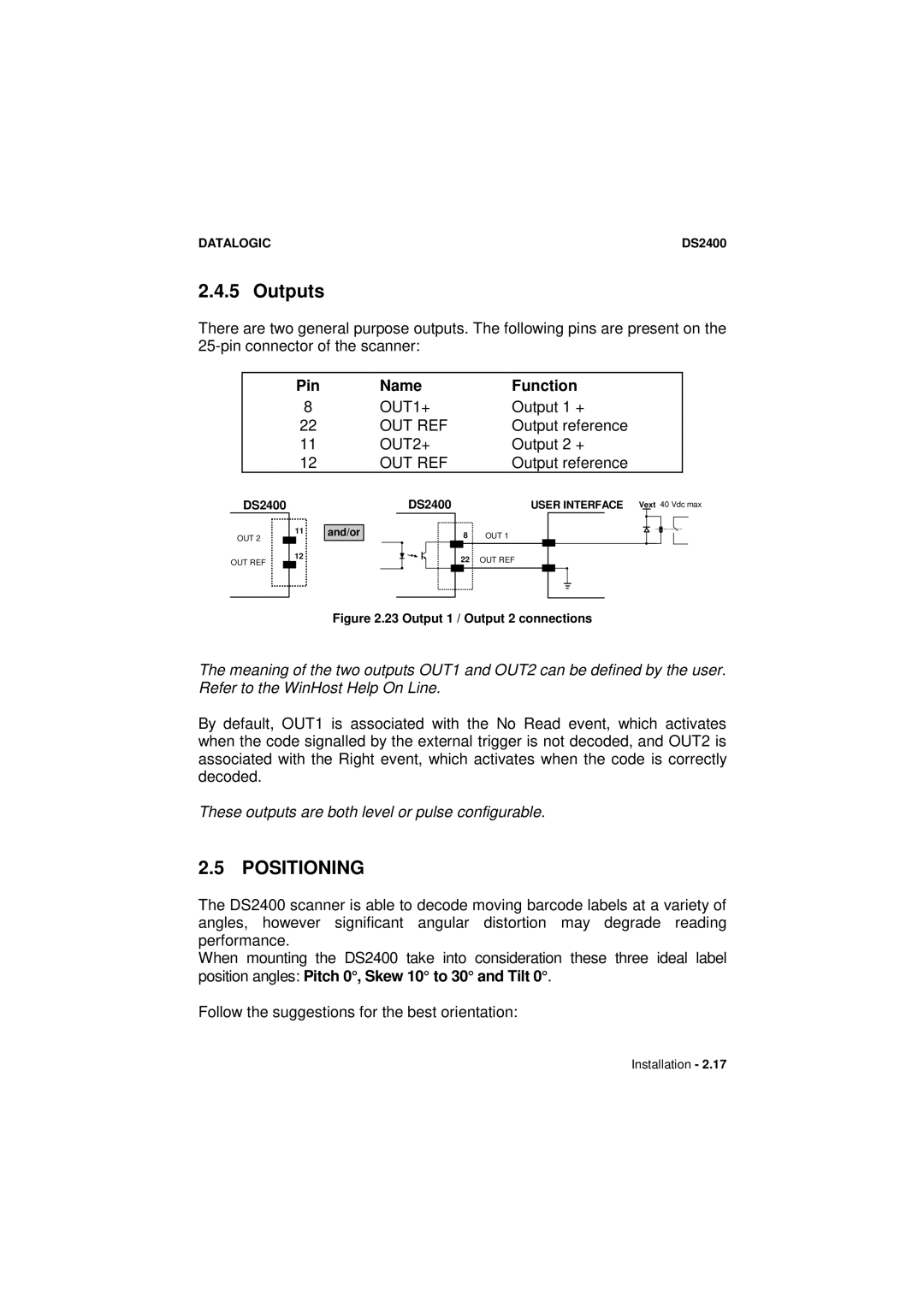DS2400 specifications
The Datalogic Scanning DS2400 is a robust and versatile laser scanner designed to meet the rigorous demands of manufacturing and logistics environments. Renowned for its exceptional performance, the DS2400 is ideal for a variety of applications, including parcel and package sorting, conveyor systems, and tracking operations within warehouses.One of the standout features of the DS2400 is its high-speed scanning capabilities. Equipped with an advanced laser scanner, it can capture and decode barcodes quickly and accurately. This rapid scanning not only enhances productivity but also reduces wait times for operators and customers alike, making it a valuable asset in fast-paced environments.
The DS2400 utilizes innovative decoding technology, which allows it to read a wide range of 1D and 2D barcodes. This flexibility is crucial in today's diverse operational settings, where multiple barcode formats are frequently encountered. Additionally, the scanner is designed to work effectively even under challenging conditions, such as extreme temperature fluctuations and varying lighting environments, ensuring reliable performance wherever it is deployed.
Another significant advantage of the DS2400 is its compact and modular design. This scanner can be easily integrated into existing systems without requiring extensive modifications, allowing for a seamless transition into operations. Its small footprint enables it to fit into tight spaces without compromising performance. Furthermore, the scanner is equipped with multiple mounting options, making it adaptable to various setups and workflows.
Datalogic's patented green dot technology aids in the scanner's exceptional user feedback capabilities. When a barcode is successfully scanned, a green dot illuminates, providing immediate confirmation to the operator. This feature helps minimize errors and enhances operator efficiency, especially in high-volume scanning scenarios.
In terms of connectivity, the DS2400 offers various interfaces, including Ethernet IP, RS232, and USB, ensuring compatibility with a wide array of systems. This versatility allows businesses to integrate the scanner into their existing infrastructure with ease.
The DS2400 is built with durability in mind, featuring a rugged housing that withstands the rigors of industrial environments. Its robust design ensures a long operational life, leading to reduced maintenance costs and fewer interruptions in workflow.
In conclusion, the Datalogic Scanning DS2400 is a state-of-the-art laser scanner that combines speed, accuracy, and adaptability. With its advanced features and rugged design, it stands out as an essential tool for businesses looking to improve efficiency and streamline operations in today's competitive landscape.

